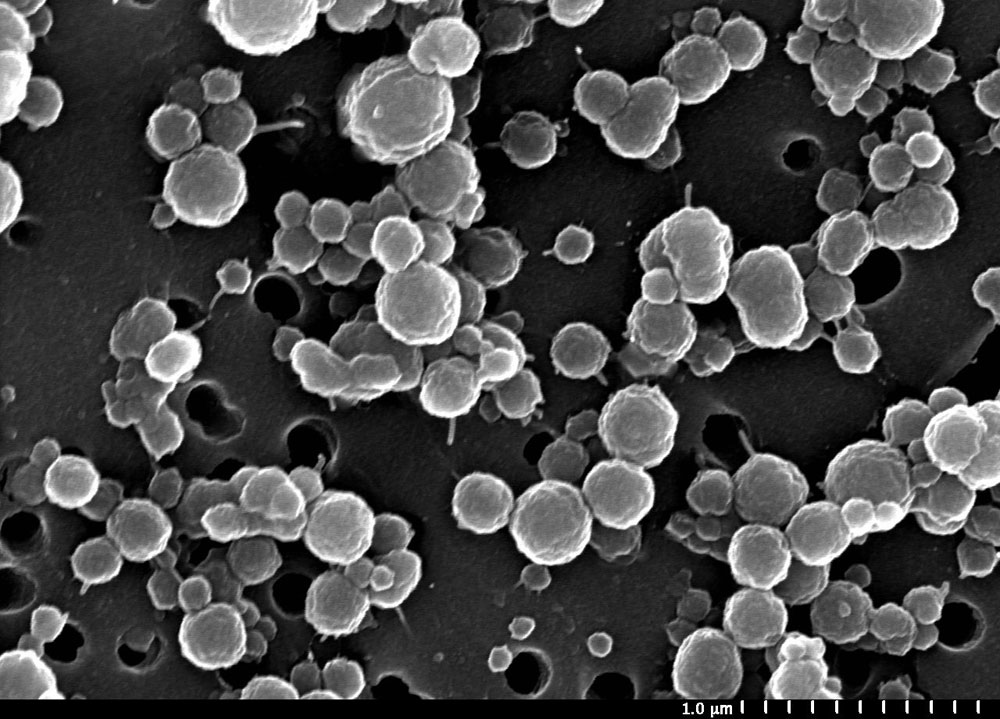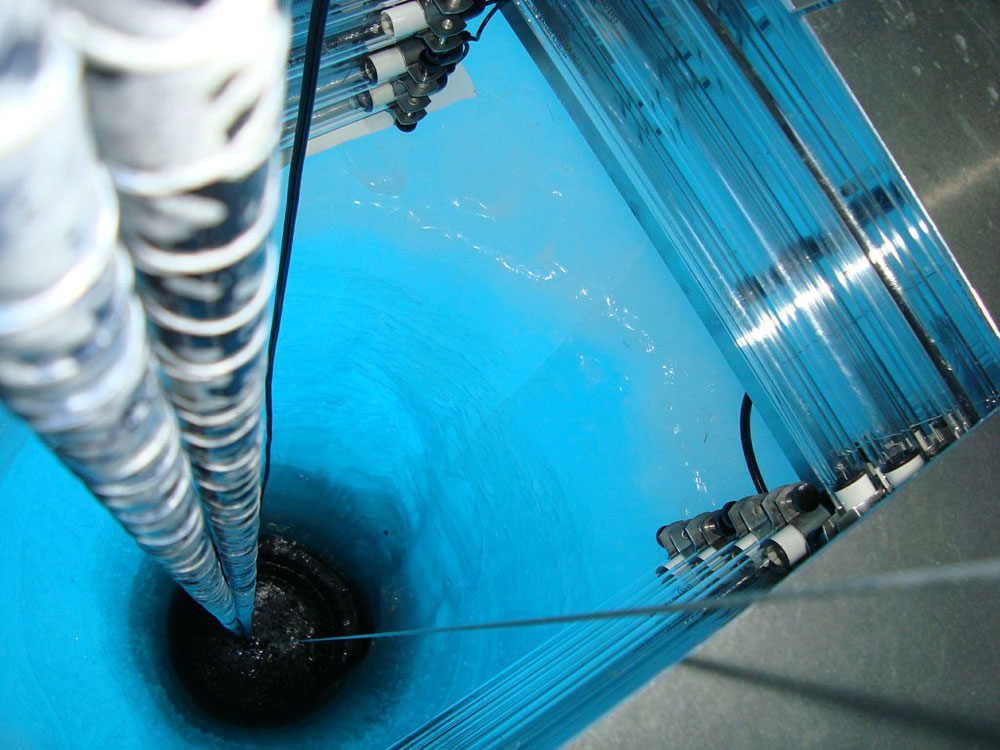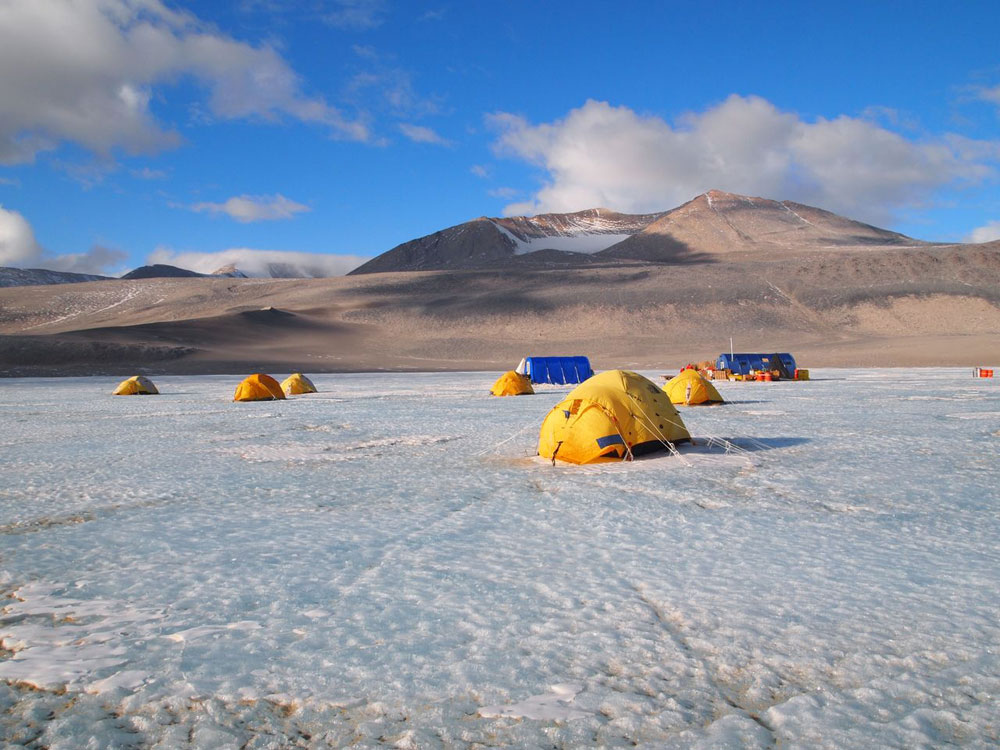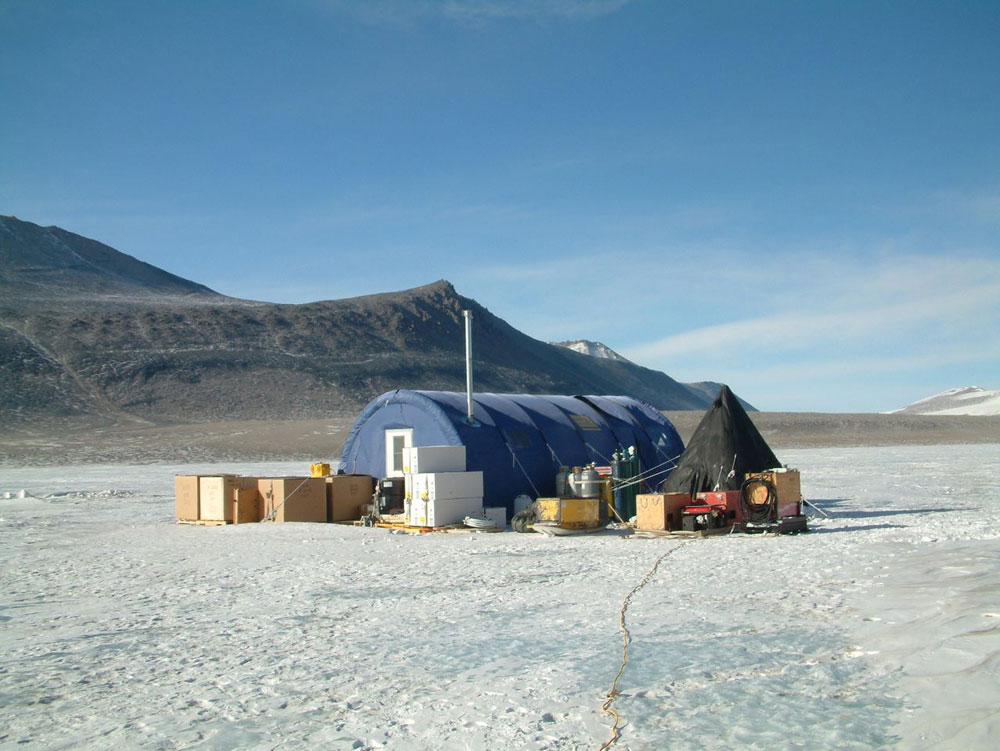
Gallery: Finding Life in a Buried Antarctic Lake
Buried Antarctic Bacteria

This image shows a scanning electron micrograph of very small (about 0.2 micron) and numerous bacterial cells found inhabiting icy brine channels in Antarctica's Lake Vida, which lies in the Victoria Valley, one of the northernmost of the Antarctic dry valleys. Five milliliters of brine collected in 2005 from the Lake Vida ice cover was filtered to detect the bacteria.The cell sizes in this image range from about 0.5 to less than 0.2 microns in diameter (the scale bar in the image is 1 micron). Some cells have curved protrusions, whose function isn't known, extending from the cell surface and that in some cases extend to other cells.
Lake Vida Clean Room

The Lake Vida field camp was established on the icy surface during November 2005 (early austral summer) in the Victoria Valley. Ice drilling and subsurface brine sampling activities were based in a laboratory tent. Extensive precautions were taken to keep the area sterile an avoid introducing any organisms into the sub-ice ecosystem, so scientists worked in a clean environment and wore clean suits. As a last precaution before entry of instruments and equipment into the ice bore hole, a high dose of ultraviolet light was delivered to them. Pictured are Ice Coring and Drilling Services Engineer Jay Kyne to the left and DRI Research Professor Christian Fritsen, who are using various instruments and a camera to study the brine that entered the ice core hole.
Lake Vida Borehole

The Lake Vida ice cover borehole. Equipment including a bank of UV lights used for instrument and equipment sterilization and a hole melter were used in initial preparation of the borehole, which reaches subsurface brine channels in the ice below 50 feet (16 meters) in the lake ice cover.
Delivering Borehole Samples

Helicopter transport was used to take subsurface icy, cryogenic brine samples back to the laboratory facilities at McMurdo Station, 75 miles (120 kilometers) away on the southern tip of Antarctica's Ross Island. These samples were retrieved from lower levels of the lake ice in November 2010.
Lake Vida Camp

Lake Vida camp was again established on the icy surface during October 2010 in the Victoria Valley. The picture is looking to the northeast. The camp camp included sleeping tents (little yellow ones), a cook tent (the little blue one), and a larger drilling, sampling and laboratory tent.
Drilling tent at Lake Vida

The ice surface at Lake Vida camp is at least 89 feet (27 meters) thick. Large sand dunes can be seen behind the camp in this image. The drilling, brine sampling and laboratory work occurred in a clean room constructed on the surface of the ice in the blue tent.
Lake Vida, Antarctica

Image of the Victoria Valley, with Lake Vida in the background and field team members in the foreground. Seth Young and Bernd Wagner explore the local geology, which on the south side of the lake is dominated with granitic rock that has been sculpted by wind and blowing sand over millennia to form rocks of very interesting shapes and sizes, referred to as ventifacts.
Get the world’s most fascinating discoveries delivered straight to your inbox.
Breaking down camp

Field camp was broken down following the 2005 season in mid-November, which required many helicopter trips to move the cargo, much of which is carried below the helicopter in swing loads.
 Live Science Plus
Live Science Plus






